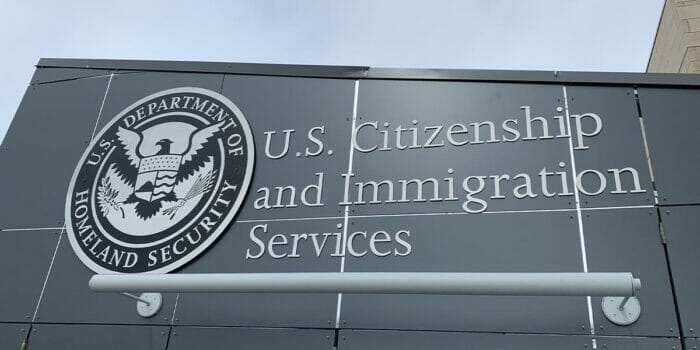
As of April 11, U.S. Citizenship and Immigration Services (USCIS) launched a new rule requiring certain immigrants in the U.S. to register with the government. While many are already considered registered through existing immigration processes, this new requirement applies to individuals who haven’t had formal contact with immigration authorities — including some undocumented immigrants and dependents.
There’s no action required from employers right now, but this change could impact your workforce. Here’s what HR teams need to know — and how to support affected employees.
Which Employees Could Be Impacted
It’s likely that most of your employees are already registered and don’t need to take any further action. Here’s how common work visa types are affected:
| Visa Type | Already Considered Registered? | Why |
| H-1B (skilled workers) | Yes | Issued visa and Form I-94 |
| L-1 (intra-company transfer) | Yes | Issued visa and Form I-94 |
| O-1 (extraordinary ability) | Yes | Issued visa and Form I-94 |
| TN (Canadian/Mexican professionals) | Yes | Issued Form I-94 at entry, even without a visa stamp |
| E-2 (investors) | Yes | Issued visa and Form I-94 |
| J-1 (exchange visitors) | Yes | Issued visa and Form I-94 |
| F-1 (students) | Yes | Issued visa and Form I-94 |
| EAD holders (e.g., DACA, TSP, OPT) | It depends | Some may need to register if they never received a visa or Form I-94 |
| Asylum seekers / undocumented | No | May not have had formal contact with immigration authorities |
Why This is Happening
U.S. immigration law has long required people living in the country without citizenship to register with the federal government, but that rule hasn’t been widely enforced. That changed with a recent executive order directing federal agencies to create a comprehensive registry of everyone living in the U.S. without legal status or formal immigration records.
According to federal officials, the goal of the new registry is to strengthen national security and improve how the government tracks people living in the U.S. without formal immigration records. The registry:
- Does not offer immigration benefits
- Does not authorize work
- Does not provide protection from deportation
It’s meant solely for compliance and identification, according to the government.
Who Needs to Register?
Many individuals are already considered registered because of prior visa, immigration, or employment-related filings. Others — particularly those who entered the U.S. without formal inspection — are now required to take additional steps.
Here’s the breakdown:
Already Considered Registered:
- Green card holders (lawful permanent residents)
- Individuals issues a U.S. visa and Form I-94
- Employment Authorization Document (EAD) holders
- Applicants for lawful permanent residence (even if denied)
- Holders of Border Crossing Cards
Now Required to Register:
- Individuals who entered the U.S. without inspection or parole
- Canadian visitors who entered via land border but weren’t formally documented
- Individuals with Deferred Action or TPS who were never issued registration documents
- Children under 14 who have been in the U.S. for more than 30 days
- Children who turned 14 and haven’t been registered or fingerprinted
- People in removal proceedings
What counts as formal registration?
Most people are automatically registered when they interact with immigration officials — like applying for a visa, entering the U.S., or getting work authorization.. Examples include:
- A visa stamp in your passport
- A Form I-94, which confirms lawful entry into the U.S.
- An Employment Authorization Document (EAD)
- A Border Crossing Card
If none of these were issued, an individual may be required to register now.
How to Support Affected Employees
This process is personal to each affected employee or dependent, but HR teams can still play a key role in offering support and guidance.
- Identify Employees Who May Be Affected
- If your organization employs individuals on humanitarian statuses (like DACA or TPS), or if you’re aware of team members who came to the U.S. through non-traditional immigration pathways, they may fall into the “must register” category. It’s worth encouraging them to confirm their status with an immigration attorney or a Department of Justice-accredited representative.
- Support Employees With Families (this registration requirement also extends to immigrant children)
- Parents or guardians must register any immigrant child under age 14 if they’ve been in the U.S. longer than 30 days.
- When a child turns 14, they are legally required to register within 30 days of their birthday — even if they were previously registered as a minor.
- This is especially relevant for employees whose children are on dependent visas or living in the U.S. without formal status.
- Accommodate Time Off
- Employees may need to take time off to attend a biometrics appointment or help a family member complete the registration process. Offering flexibility will help ensure timely compliance.
- Offer Guidance, Not Legal Advice
- Make it clear that the company is not collecting information or advising employees on their personal immigration status. Instead, offer referrals to trusted legal partners, local nonprofits, or immigration clinics.
- Make it clear that the company is not collecting information or advising employees on their personal immigration status. Instead, offer referrals to trusted legal partners, local nonprofits, or immigration clinics.
Final Thoughts
Navigating immigration changes can be overwhelming — for both employees and employers. By staying informed and creating space for open conversations and early action, HR teams can make a real difference in helping international employees feel supported and safe.
At Boundless, we help employers cut through the noise and provide accurate, actionable immigration insights. If you’d like help building resources for your team or communicating these changes to employees, we’re here to help.